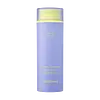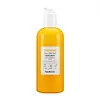What's inside
What's inside
 Key Ingredients
Key Ingredients

 Benefits
Benefits

 Concerns
Concerns

 Ingredients Side-by-side
Ingredients Side-by-side

Water
Skin ConditioningPropylheptyl Caprylate
EmollientTromethamine
BufferingC12-15 Alkyl Benzoate
AntimicrobialUrea
BufferingGlycolic Acid
BufferingLactic Acid
BufferingNiacinamide
SmoothingDipropylene Glycol
HumectantCetearyl Alcohol
EmollientGlyceryl Stearate
EmollientPEG-100 Stearate
1,2-Hexanediol
Skin ConditioningCetearyl Glucoside
EmulsifyingSodium Polyacryloyldimethyl Taurate
Emulsion StabilisingCaprylic/Capric Triglyceride
MaskingGlycerin
HumectantCaprylyl Glycol
EmollientPolyacrylamide
Salicylic Acid
MaskingSphingomonas Ferment Extract
Skin ConditioningC13-14 Isoparaffin
EmollientDisodium EDTA
Bakuchiol
AntimicrobialEthylhexylglycerin
Skin ConditioningXanthan Gum
EmulsifyingAdenosine
Skin ConditioningLaureth-7
EmulsifyingRetinal
Skin ConditioningBeta-Glucan
Skin ConditioningTocopherol
AntioxidantWater, Propylheptyl Caprylate, Tromethamine, C12-15 Alkyl Benzoate, Urea, Glycolic Acid, Lactic Acid, Niacinamide, Dipropylene Glycol, Cetearyl Alcohol, Glyceryl Stearate, PEG-100 Stearate, 1,2-Hexanediol, Cetearyl Glucoside, Sodium Polyacryloyldimethyl Taurate, Caprylic/Capric Triglyceride, Glycerin, Caprylyl Glycol, Polyacrylamide, Salicylic Acid, Sphingomonas Ferment Extract, C13-14 Isoparaffin, Disodium EDTA, Bakuchiol, Ethylhexylglycerin, Xanthan Gum, Adenosine, Laureth-7, Retinal, Beta-Glucan, Tocopherol
Water
Skin ConditioningParaffinum Liquidum
EmollientGlycerin
HumectantAnnona Squamosa Fruit Extract
Skin ConditioningGlyceryl Stearate
EmollientPEG-100 Stearate
Caprylic/Capric Triglyceride
MaskingPotassium Hydroxide
BufferingLauroyl Lysine
Skin ConditioningHydrogenated Lecithin
EmulsifyingCholesterol
Emollient3-O-Ethyl Ascorbic Acid
Skin ConditioningButylene Glycol
HumectantPolyglyceryl-10 Stearate
Skin ConditioningPanthenol
Skin ConditioningSodium Ascorbyl Phosphate
AntioxidantTocopheryl Acetate
AntioxidantCaprylyl Glycol
EmollientGlyceryl Arachidonate
EmollientGlyceryl Linolenate
EmollientBiotin
AntiseborrhoeicRetinyl Palmitate
Skin ConditioningCetearyl Alcohol
EmollientCarbomer
Emulsion StabilisingDisodium EDTA
Methylparaben
PreservativePhenoxyethanol
PreservativePropylparaben
PreservativeParfum
MaskingWater, Paraffinum Liquidum, Glycerin, Annona Squamosa Fruit Extract, Glyceryl Stearate, PEG-100 Stearate, Caprylic/Capric Triglyceride, Potassium Hydroxide, Lauroyl Lysine, Hydrogenated Lecithin, Cholesterol, 3-O-Ethyl Ascorbic Acid, Butylene Glycol, Polyglyceryl-10 Stearate, Panthenol, Sodium Ascorbyl Phosphate, Tocopheryl Acetate, Caprylyl Glycol, Glyceryl Arachidonate, Glyceryl Linolenate, Biotin, Retinyl Palmitate, Cetearyl Alcohol, Carbomer, Disodium EDTA, Methylparaben, Phenoxyethanol, Propylparaben, Parfum
 Reviews
Reviews

Ingredients Explained
These ingredients are found in both products.
Ingredients higher up in an ingredient list are typically present in a larger amount.
This ingredient is an emollient, solvent, and texture enhancer. It is considered a skin-softener by helping the skin prevent moisture loss.
It helps thicken a product's formula and makes it easier to spread by dissolving clumping compounds.
Caprylic Triglyceride is made by combining glycerin with coconut oil, forming a clear liquid.
While there is an assumption Caprylic Triglyceride can clog pores due to it being derived from coconut oil, there is no research supporting this.
Learn more about Caprylic/Capric TriglycerideCaprylyl Glycol is a humectant and emollient, meaning it attracts and preserves moisture.
It is a common ingredient in many products, especially those designed to hydrate skin. The primary benefits are retaining moisture, skin softening, and promoting a healthy skin barrier.
Though Caprylyl Glycol is an alcohol derived from fatty acids, it is not the kind that can dry out skin.
This ingredient is also used as a preservative to extend the life of products. It has slight antimicrobial properties.
Learn more about Caprylyl GlycolCetearyl alcohol is a mixture of two fatty alcohols: cetyl alcohol and stearyl alcohol. It is mainly used as an emulsifier. Emulsifiers help prevent the separation of oils and products. Due to its composition, it can also be used to thicken a product or help create foam.
Cetearyl alcohol is an emollient. Emollients help soothe and hydrate the skin by trapping moisture.
Studies show Cetearyl alcohol is non-toxic and non-irritating. The FDA allows products labeled "alcohol-free" to have fatty alcohols.
This ingredient is usually derived from plant oils such as palm, vegetable, or coconut oils. There is debate on whether this ingredient will cause acne.
Due to the fatty acid base, this ingredient may not be Malassezia folliculitis safe.
Learn more about Cetearyl AlcoholDisodium EDTA plays a role in making products more stable by aiding other preservatives.
It is a chelating agent, meaning it neutralizes metal ions that may be found in a product.
Disodium EDTA is a salt of edetic acid and is found to be safe in cosmetic ingredients.
Learn more about Disodium EDTAGlycerin is already naturally found in your skin. It helps moisturize and protect your skin.
A study from 2016 found glycerin to be more effective as a humectant than AHAs and hyaluronic acid.
As a humectant, it helps the skin stay hydrated by pulling moisture to your skin. The low molecular weight of glycerin allows it to pull moisture into the deeper layers of your skin.
Hydrated skin improves your skin barrier; Your skin barrier helps protect against irritants and bacteria.
Glycerin has also been found to have antimicrobial and antiviral properties. Due to these properties, glycerin is often used in wound and burn treatments.
In cosmetics, glycerin is usually derived from plants such as soybean or palm. However, it can also be sourced from animals, such as tallow or animal fat.
This ingredient is organic, colorless, odorless, and non-toxic.
Glycerin is the name for this ingredient in American English. British English uses Glycerol/Glycerine.
Learn more about GlycerinGlyceryl Stearate is a mix of glycerin and stearic acid.
It is used to stabilize the mixing of water and oil ingredients. By preventing these ingredients from separating, it can help elongate shelf life. It can also help thicken the product's texture.
As an emollient, it helps soften skin and supports barrier-replenishing ingredients.
In cosmetics, Glyceryl Stearate is often made from vegetable oils or synthetically produced.
This ingredient may not be fungal-acne safe
Fun fact: The human body also creates Glyceryl Stearate naturally.
Learn more about Glyceryl StearatePeg-100 Stearate is an emollient and emulsifier. As an emollient, it helps keep skin soft by trapping moisture in. On the other hand, emulsifiers help prevent oil and water from separating in a product.
PEGS are a hydrophilic polyether compound . There are 100 ethylene oxide monomers in Peg-100 Stearate. Peg-100 Stearate is polyethylene glycol ester of stearic acid.
Water. It's the most common cosmetic ingredient of all. You'll usually see it at the top of ingredient lists, meaning that it makes up the largest part of the product.
So why is it so popular? Water most often acts as a solvent - this means that it helps dissolve other ingredients into the formulation.
You'll also recognize water as that liquid we all need to stay alive. If you see this, drink a glass of water. Stay hydrated!
Learn more about Water